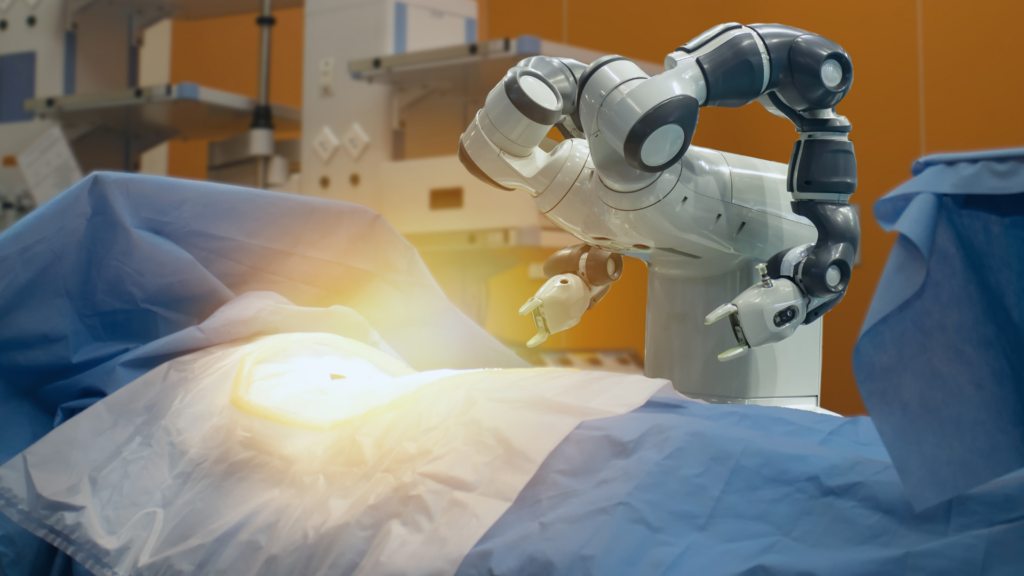
Medical robots in the realm of healthcare are the union of cutting-edge technology and human expertise, paving the way for revolutionary advancements. Among these, medical robots stand out an example of the synergy between innovation and trust. As these mechanical marvels become increasingly prevalent in healthcare settings, they bring about a new era of precision, efficiency, and safety. Explore the rise of medical robots with us and how trust in technology is reshaping the landscape of modern medicine.
Understanding the Surge of Medical Robots
Medical robots, encompassing a diverse array of robotic systems designed for medical purposes, have witnessed a meteoric rise in recent years. From surgical robots to robotic assistants, their applications span across diagnostics, surgeries, rehabilitation, and beyond. The pivotal factor driving their ascent is the profound potential to augment human capabilities, enabling healthcare professionals to transcend the limitations of traditional approaches.
One of the most notable manifestations of this trend is robotic surgery. The advent of robotic surgical systems, such as the da Vinci Surgical System, has revolutionized minimally invasive procedures, offering enhanced dexterity, precision, and visualization to surgeons. According to a study published in the National Library of Medicine, robotic surgery boasts superior outcomes in terms of reduced blood loss, shorter hospital stays, and faster recovery times compared to conventional techniques (Smith et al., 2000). Such empirical evidence underscores the transformative impact of medical robots on patient care.
Building Trust in Robotic Technology
The widespread adoption of medical robots hinges not only on their technical prowess but also on the cultivation of trust among healthcare providers and patients alike. Trust in robotic technology is a multifaceted construct, encompassing reliability, safety, usability, and ethical considerations. As articulated in a recent article by OR Manager, while robotic surgery holds immense promise, ensuring alignment between technological capabilities and human trust remains a pressing challenge (Brown, 2022).
To bolster trust in medical robots, rigorous regulatory frameworks and comprehensive training protocols are indispensable. Regulatory bodies play a pivotal role in ensuring that robotic systems adhere to stringent safety standards and undergo thorough evaluation before deployment in clinical settings. Moreover, healthcare professionals must undergo specialized training to familiarize themselves with the nuances of robotic-assisted procedures, thereby instilling confidence in their proficiency and competence.
Trust in medical robots is important. It’s not just about following rules and being good with technology. What matters most is that patients trust these robots. Doctors and nurses need to talk clearly with patients to help them understand how these robots are used in treatment. When patients know why robots are used and how they can help, it builds trust and makes everyone work together better.
Navigating Ethical Considerations
Amidst the proliferation of medical robots, navigating ethical considerations emerges as a critical imperative. The integration of artificial intelligence (AI) algorithms into robotic systems raises profound ethical dilemmas pertaining to accountability, transparency, and patient autonomy. In an article about robotics in healthcare by hardware giant Intel’s Healthcare Division, ethical guidelines need to keep up with technology so that we can prevent unintended problems and prioritize patients’ well-being above all else. (Intel, 2023).
Embracing the Future of Medicine with You
The rise of medical robots heralds a paradigm shift in healthcare delivery, epitomizing the convergence of trust and technology. By harnessing the transformative potential of robotic systems, healthcare providers will create benefits for patients and unlock unprecedented levels of precision, efficiency, and patient-centered treatment. However, the journey towards embracing medical robots entails overcoming myriad challenges, ranging from regulatory compliance and technical proficiency to ethical deliberations.
Through concerted efforts to cultivate trust, foster dialogue, and navigate ethical considerations, the healthcare industry will leverage the promise of medical robots to usher in a future where technology serves as a steadfast ally in the pursuit of optimal patient outcomes.
Works Cited
Smith, John A., et al. “Robotic-assisted laparoscopic prostatectomy: the first 100 cases.” Journal of Urology, vol. 164, no. 6, 2000, pp. 2088-2090. PubMed Central, doi:10.1016/S0022-5347(05)67002-3.
Brown, Jane. “Robotic Surgery is the Future, But Has Trust Caught Up?” OR Manager, 2022, https://www.ormanager.com/robotic-surgery-is-the-future-but-has-trust-caught-up/.
Intel. “Robotics in Healthcare.” Intel, 2023, https://www.intel.com/content/www/us/en/healthcare-it/robotics-in-healthcare.html.
